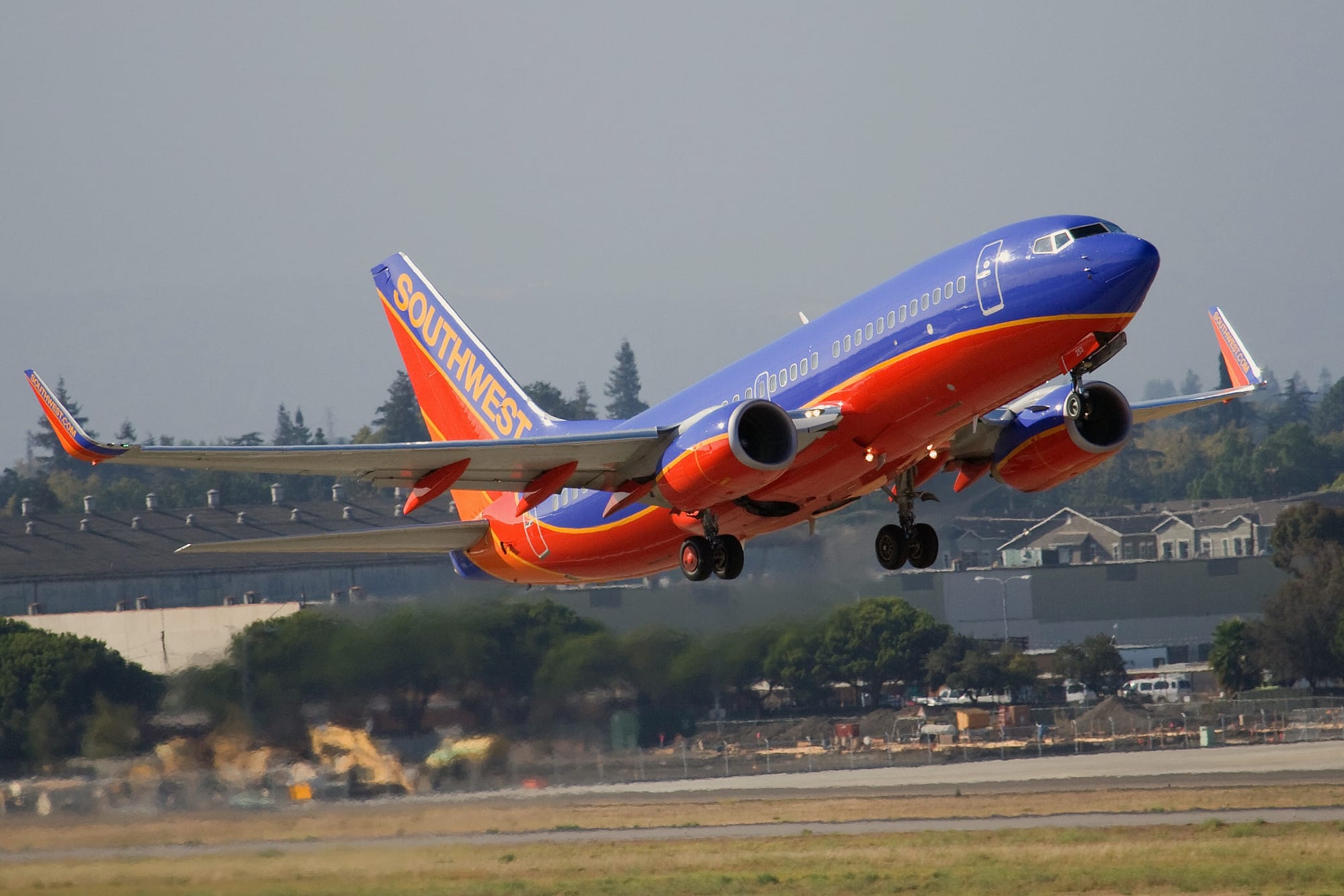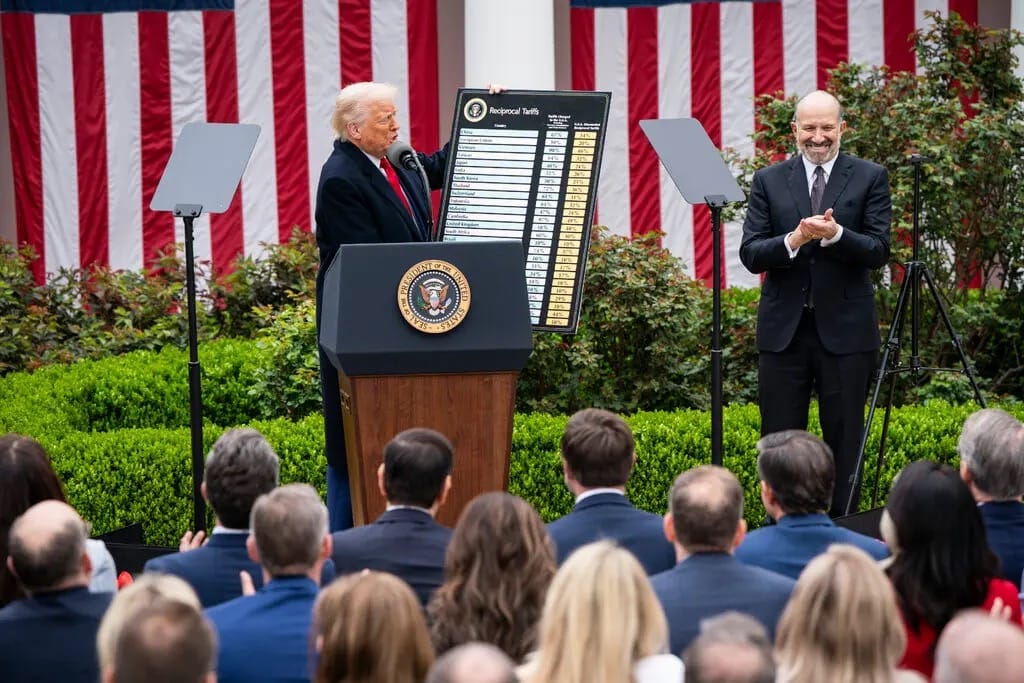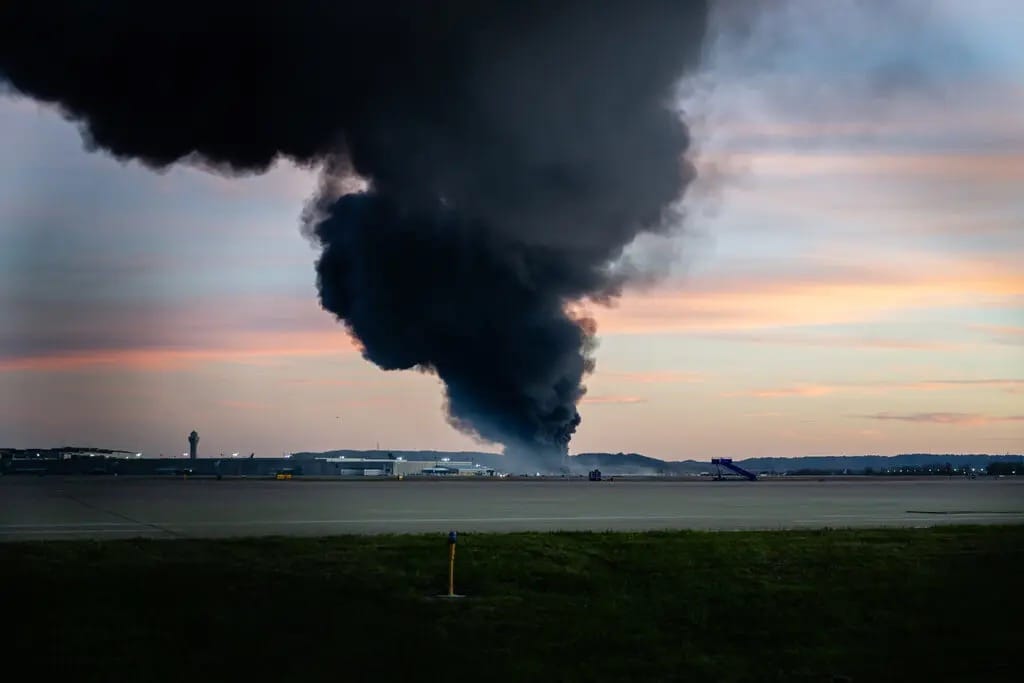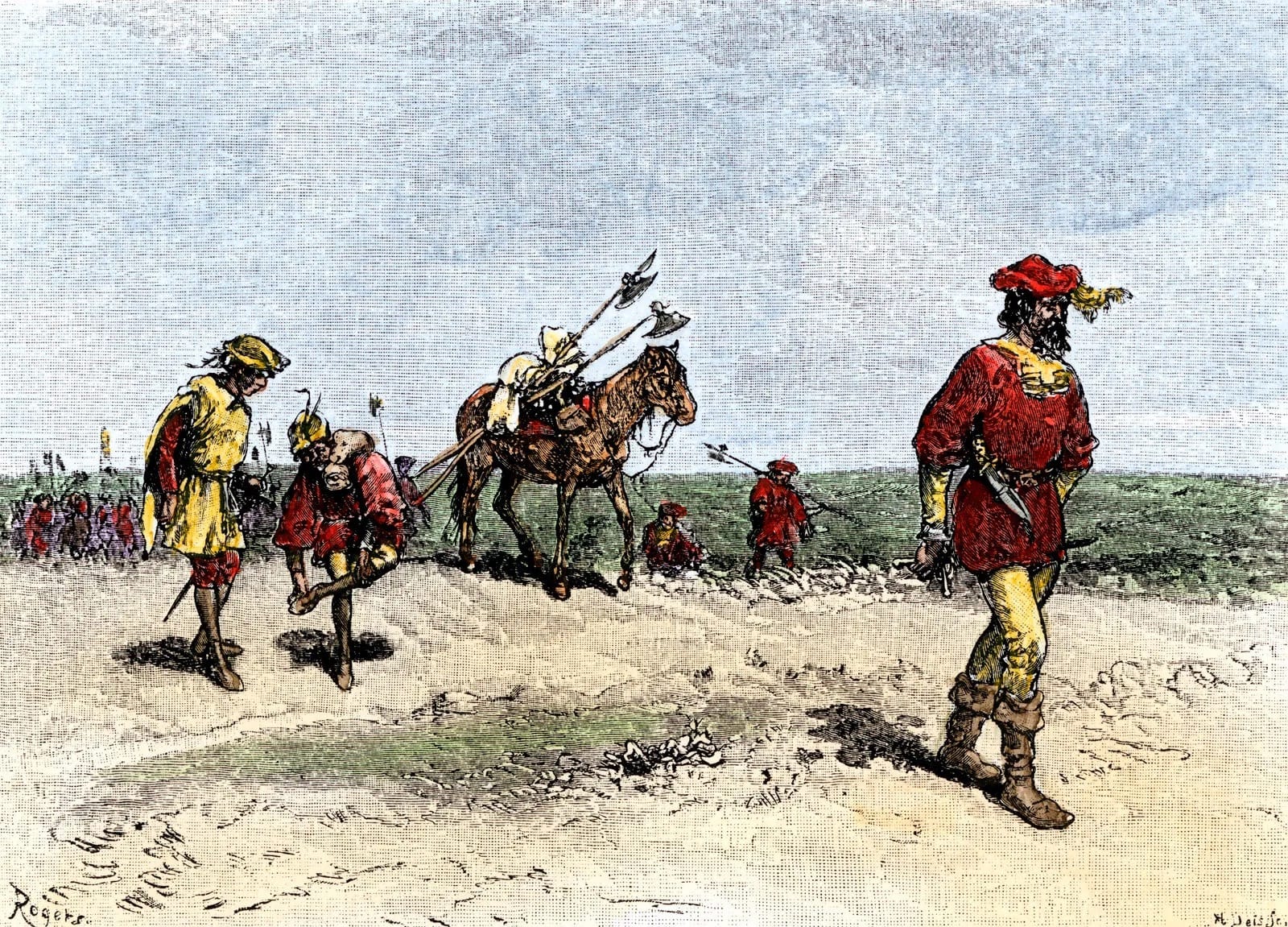Top 5 US news stories
November 6 2025

FAA to Cut Flights 10% at 40 Major Airports Amid Shutdown
Supreme Court Hears Case Against President's Emergency Tariff Powers
White House Eyes Alternate Trade Laws to Preserve Tariffs Should Top Court Rule Against It
Probe Into Fatal UPS Crash Focuses on Detached Engine, 34-Year-Old Plane's Repair History
Beijing Slashes Power Costs by 50% for Tech Giants to Offset Pricey Domestic AI Chips
…US GOVERNMENT SHUTDOWN ENTERS 37th DAY, LONGEST SHUTDOWN IN US HISTORY…
FAA to Cut Flights 10% at 40 Major Airports Amid Shutdown
The Trump administration announced on Wednesday that it would cut 10 percent of air traffic at 40 of the nation’s busiest airports, in a move that analysts said would force airlines to cancel thousands of flights while the administration tries to push Democrats to end the government shutdown. Transportation Secretary Sean Duffy said the reductions were an attempt to “alleviate the pressure” on air traffic controllers, who have been working without compensation since the start of the shutdown and have not received a paycheck since mid-October. He said the administration would announce the affected markets on Thursday, as the year’s busiest travel season approaches. The cuts would start taking effect on Friday, potentially forcing hundreds of thousands of travelers to change plans on short notice, as airlines are pressured to slash capacity across their routes. Turmoil in the nation’s air travel system, which moves millions of passengers daily, has long been considered to be among the most tangible and disruptive potential effects of government shutdowns — and consequently, one of the biggest pain points to force a deal. Despite a shutdown that stretched into a record 36th day on Wednesday, the system has largely held up so far, though it has shown some worrisome signs of fraying.
NYT
Supreme Court Hears Case Against President's Emergency Tariff Powers
A majority of Supreme Court justices on Wednesday asked skeptical questions about President Trump’s use of emergency powers to impose tariffs on imports from nearly every U.S. trading partner, casting doubt on a centerpiece of the administration’s second-term agenda. The outcome of the case, which could be decided within weeks or months, has immense economic and political implications for U.S. businesses, consumers and the president’s trade policy. Several members of the court’s conservative majority, including Justice Amy Coney Barrett and Justice Neil M. Gorsuch, joined the liberal justices in sharply questioning the Trump administration’s assertion that it has the power to unilaterally impose tariffs without congressional approval. The key question for the justices on Wednesday was whether the president exceeded his authority when he used the 1977 emergency statute. Past presidents have relied on the law to impose sanctions or embargoes on other countries, but Mr. Trump is the first to use it to impose tariffs. Until now, the Supreme Court’s conservative majority has been largely receptive to Mr. Trump’s claims of presidential authority, but it has ruled largely on emergency orders that have been technically temporary. The tariffs case, which is considered a legal tossup by experts, is the first time in Mr. Trump’s second term that the justices will address the underlying legal merits of a major administration priority in a more lasting way. The case reached the Supreme Court after three lower courts concluded the tariffs were unlawful.

NYT
White House Eyes Alternate Trade Laws to Preserve Tariffs Should Top Court Rule Against It
If the Supreme Court strikes down President Trump’s use of emergency powers to impose sweeping tariffs, the administration is prepared to fall back on several narrower trade laws to preserve its tariff agenda. Officials could invoke Section 232 of the Trade Expansion Act of 1962, which allows tariffs tied to national security, or Section 301 of the Trade Act of 1974, targeting unfair foreign trade practices. Other, less-used authorities — including Section 122 of the 1974 law or the Tariff Act of 1930 — could enable short-term or retaliatory duties. These alternatives, however, would slow implementation and limit scope. Unlike the emergency powers law, the substitute statutes require investigations, findings, or time limits, making it harder for the White House to impose blanket tariffs on all imports. The outcome could blunt the administration’s leverage abroad while keeping businesses and consumers in limbo as new, legally defensible trade barriers are developed.
citizen journal
Probe Into Fatal UPS Crash Focuses on Detached Engine, 34-Year-Old Plane's Repair History
A. The United Parcel Service cargo plane that crashed Tuesday was 34 years old and needed a critical repair on its fuel tank in September. The MD-11 plane was grounded in San Antonio from Sept. 3 through at least Oct. 18, according to flight records. Maintenance records with the Federal Aviation Administration show the jet needed a permanent repair to fix a crack in the fuel tank before it returned to service. The cause of the crash in Kentucky, which killed at least 12 people, is still under investigation. A video of the plane taking off showed one engine on fire before it crashed just beyond the Louisville airport’s runway. The plane was bound for Honolulu. One of the jet’s engines detached from the left wing during takeoff and was found on the ground at the airport, National Transportation Safety Board officials said in a press briefing Wednesday. Investigators said they had located the aircraft’s flight-data recorder and cockpit voice recorder, or so-called black boxes, and would be taking the devices to Washington, D.C., for analysis. Kentucky Gov. Andy Beshear said at a press briefing that authorities were still searching for missing people but aren’t expecting to find anyone alive. He said he believed a young child might be among the dead. The flight’s three crew members remained unaccounted for.
B. An engine on the UPS cargo jet that crashed in Louisville, Ky., this week fell off moments before the plane took flight, the National Transportation Safety Board said on Wednesday. The jet, with a crew of three, plunged to the ground seconds later and erupted into flames as it careened through industrial buildings at the edge of the Louisville Muhammad Ali International Airport Tuesday evening.

WSJ / NYT
Beijing Slashes Power Costs by 50% for Tech Giants to Offset Pricey Domestic AI Chips
China has increased subsidies that cut energy bills by up to half for some of the country’s largest data centres, as Beijing steps up efforts to boost its domestic chips industry and compete with the US. Local governments have beefed up incentives to help Chinese tech giants such as ByteDance, Alibaba and Tencent, which have been hit with higher electricity costs following Beijing’s ban on purchasing Nvidia’s artificial intelligence chips, according to people familiar with the matter. They added that the new subsidies come after several tech groups complained to regulators about the increased costs of using domestic semiconductors from companies such as Huawei and Cambricon, most of which are less energy-efficient than Nvidia’s. Local governments in data centre-heavy provinces such as Gansu, Guizhou and Inner Mongolia have responded by offering subsidies that slash big data centres’ electricity bills by as much as 50 per cent, provided that they are powered by domestic chips.
FT
November 6 1528: Spanish explorer Cabeza de Vaca lands in Texas
The Spanish conquistador Alvar Nunez Cabeza de Vaca runs aground on a low sandy island off the coast of Texas. Starving, dehydrated and desperate, he is the first European to set foot on the soil of the future Lone Star state.
Cabeza de Vaca’s unintentional journey to Texas was a disaster from the start. A series of dire accidents and Native American attacks plagued his expedition’s 300 men as they explored north Florida. The survivors then cobbled together five flimsy boats and headed to sea, where they endured vicious storms, severe shortages of food and water and attacks from Native Americans wherever they put to shore. With his exploration party reduced to only 80 or 90 men, Cabeza de Vaca’s motley flotilla finally wrecked on what was probably Galveston Island just off the coast of Texas.
de Vaca left Europe in 1527 as part of a Spanish expedition led by Pánfilo de Narváez, commissioned by King Charles V to explore and colonize the lands along the Gulf of Mexico—then believed to be rich in resources and ripe for conquest. Departing from Spain with about 600 men and several ships, Cabeza de Vaca served as the expedition’s treasurer and second in command. Like many conquistadors of his era, he sought wealth, status, and imperial glory for Spain, but also personal advancement in the New World. What began as an ambitious mission to claim territory for the Spanish crown soon turned disastrous, leading to shipwreck, starvation, and years of survival among Indigenous peoples across what is now the southern United States.
During the next four years, the party barely managed to eke out a tenuous existence by trading with the Native Americans located in modern-day east Texas. The crew steadily died off from illness, accidents and attacks until only Cabeza de Vaca and three others remained. In 1532, the four survivors set out on an arduous journey across the present-day states of Texas, New Mexico, and Arizona. Captured by the Karankawa Natives, they lived in virtual bondage for nearly two years. Only after Cabeza de Vaca had won the respect of the Karankawa by becoming a skilled medicine man and diplomat did the small band win their freedom.
In 1536, the men encountered a party of Spanish explorers in what is now the Mexican state of Sinaloa. They followed them back to Mexico City, where the tale of their amazing odyssey became famous throughout the colony and in Europe. Despite the many hardships experienced by Cabeza de Vaca and his men during their northern travels, their stories inspired others to intensify exploration of the region that would one day become Texas.

We are temporarily pausing our podcasts as we revamp our app so any article can be read as audio
Found a mistake? Have a news tip or feedback to share? Contact our newsroom using the button below:
citizen journal offers three flagship products: a daily national news summary, a daily Kansas news summary, and local news and school board summaries from 29 cities across 5 states. Use the links in the header to navigate to national, kansas, and local coverage. Subscribe to each, some, or all to get an email when new issues are published for FREE!
Brought to you by (click me!)
Sources
- https://www.nytimes.com/2025/11/05/us/politics/faa-flights-air-traffic-government-shutdown.html
- https://www.nytimes.com/2025/11/05/us/politics/supreme-court-trump-tariffs.html?smid=nytcore-ios-share&referringSource=articleShare
- citizen journal
- https://www.wsj.com/business/airlines/ups-plane-that-crashed-was-34-years-oldand-repaired-in-september-9b4828db?mod=hp_lead_pos6
- https://www.nytimes.com/2025/11/05/us/ups-plane-crash-louisville.html?smid=nytcore-ios-share&referringSource=articleShare
- https://on.ft.com/3JAwFvZ

